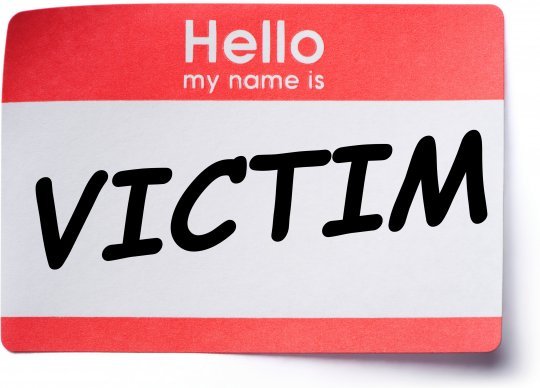You’ve been victimized. There’s no doubt that you have suffered at the hands of another. You have been hurt and the fallout was devastating. Clearly you are the victim.
Once you’ve been victimized, you find your place within the Victim’s Spectrum.
On the left side of the spectrum is the full-on victim and on the right side of the spectrum is the fully-free victim.
In my work with victims I can find the victim at any place along the victim’s spectrum. Ideally, I would like to see all victims make their way to being fully-free but it is a process and some victims progress very far along the spectrum and some stay at the point they entered the spectrum.
There are advantages to being a full-on victim. You can easily gain the interest of anyone who is sorry you were victimized, but thankful they were not the victim in your story. You can garner their undivided attention while you tell your story and they pay close attention in the hopes that by doing so, they may be able to avoid falling victim to a similar circumstance.
People who love and care about you will offer their support, encouragement and empathetic concern as they try to comfort you while in the throes of pain and anguish and their support does help to decrease the pain from being victimized.
The full-on end of the spectrum is based in fear; fear of being further victimized and the fear can be debilitating, preventing you from being able to make any positive movement along the spectrum and may overflow into other areas of your life. Left unattended the full-in victim may be completely consumed by the fear, in the most catastrophic of circumstances may be catatonic.
Also, as the full-on victim, there is little responsibility on the part of the victim. Reduced to its simplest terms, the victim is right or good and the victimizer is wrong or bad (possibly even evil). Even though being a victim is embarrassing, and represents loss, shame and suffering, the affirmation of the victim’s goodness or rightness has some redeeming value and may be seen as comforting to the victim.
There is no condemnation for being the full-on victim and just as in dealing with grief (as in the loss of a loved one), only the sufferer can determine when is the right time to make any movement toward healthy healing and freedom.
In terms of spiritual enlightenment, the more advanced life traveler will more quickly firmly position him or herself at fully-free.
What does the fully-free victim look like?
1. Decides not to be a victim
You may not be able to reverse your victimization, but you can choose to not act or feel like one. Be aware that this is a process and its different for everyone.
2. Take full responsibility
That means you stop blaming someone or something else for your victimization. In taking full responsibility, you assume that you caused the events that led to your victimization and the actual victimization to happen.
3. Retain the Learning
Review the process of the victimization. What did you do to make yourself vulnerable? What could you have done better to protect yourself. When reviewing, try not to do so from a viewpoint of fear or anger, instead attempt to look through the eyes of tolerance and love. The learning is the purpose behind the victimization.
4. Be Thankful
Adopt an attitude of gracious thankfulness for the entire affair. You have survived and earned your master’s degree in how not to be victimized, like this, again. You have paid dearly for the training and experience, and you are thankful for the opportunity.
Speaking of opportunity, I have realized in my life, any time something goes tragically wrong, there is something better coming… I start looking around for something amazing that is on its way as soon as possible.
5. Forgive and Let Go
This means to forgive yourself for the part you played in attracting or allowing the victimization to happen. Also forgive all other participants in the victimization, remember you are thankful for their participation in your learning process.
Letting go means holding no grudges and not feeling bad. If you are able to authentically and honestly forgive and accept all the good that has arisen from this tragedy, you can let it go. That means: No complaining, only recalling the treasure hidden within the process and celebration of your survival.
6. Accept Your Calling
Your experience may have great value to others. This may have been the purpose behind the whole affair. You have been through it, you survived and are better for it. You now can offer understanding, empathetic compassion, hope and assistance to others who may be involved in a similar situation.
This is likely why you were chosen to have this experience, to help others. I know that was the blessing in my experience with a psychopath. It opened my eyes to something I didn’t believe existed prior to surviving the experience, as well as any other less than desirable (or tragic) experiences I have survived along the way.
7. Accept the Process
Realize that moving along the victim’s spectrum is a process. As you are in search of recovery, your progress may vary, but it does get better the longer you work on the process.
Remember, you are not a bad person, neither are any of the other players. Love yourself, love others and keep moving toward love and in doing so you will be the recipient of increased peace and harmony.
